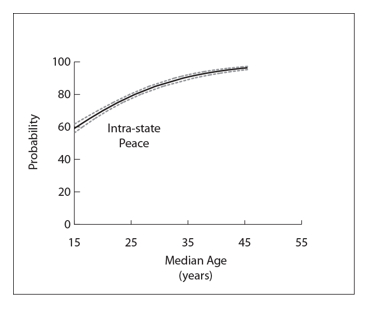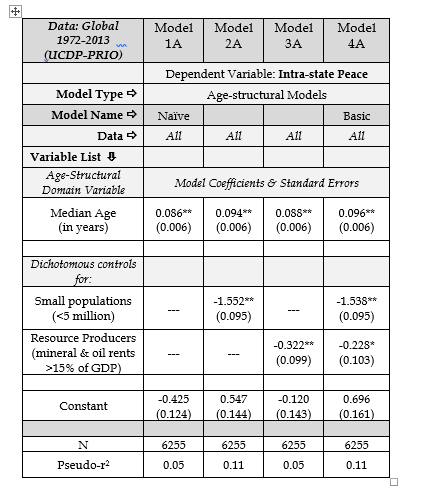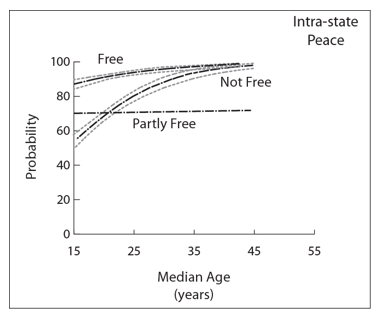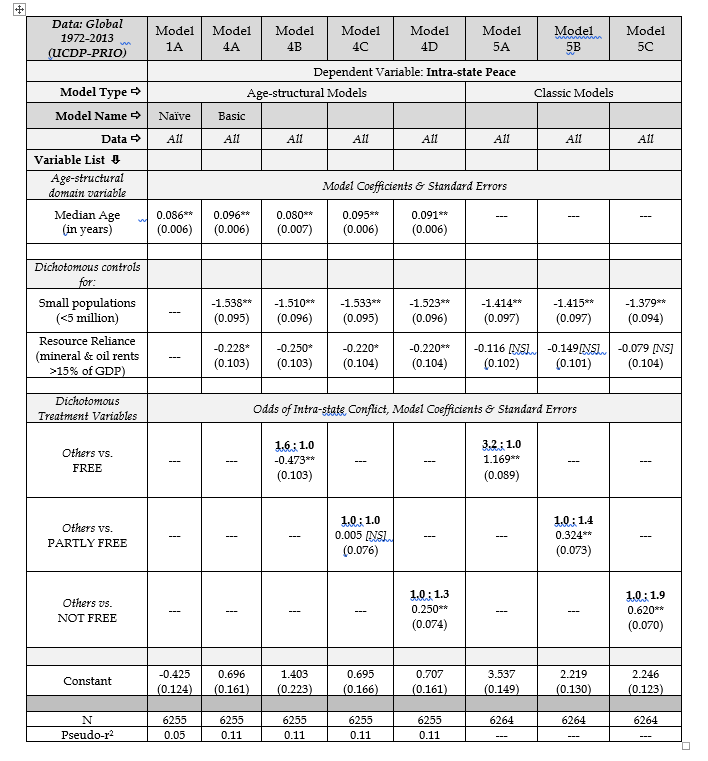Models of Intra-state Peace
Logistic regression of intra-state peace data (UCDP/PRIO data, >25 battle-related deaths per year) yields statistically significant (p<0.05) age-structural functions (Table 1) for the presence of intra-state peace in the naïve model, as a function of median age only (without controls) (Model 1A), as well as in a basic model (Table 1, Model 4A) (functional form in Fig. 1), which was controlled for small population size (<5 million) and resource reliance (oil and mineral wealth > 15% of GDP). In the basic model, both controls were found to highly significant (p<0.01). Applying the basic model, the annual probability of intra-state peace was determined to be about 0.59 (±0.03) at a median age of 15 years, rising to 0.96 (±0.01) at a median age of 45 years.

Figure 1. The probability of intra-state peace (± 0.95 confidence interval) as a function of median age.

Table 1. The probability of intra-state peace (± 0.95 confidence interval) as a function of median age.
Differential Behaviors Among Regime Categories (Freedom status). Applying the basic age-structural model (4A, controlled for states with small populations and resource reliant states), functions for regimes assessed as Free (liberal democracies) and Not Free (autocracies) were determined to vary significantly with median age (Table 2). When compared with Partly Free and Not Free regimes, those assessed as Free were found to be associated with higher probabilities of intra-state peace across the entirety of the age-structural domain (Table 2, Fig. 2). Being assessed as Not Free was associated with much lower probabilities along the domain. The age-structural model of the group of states assessed as Partly Free was not determined to be statistically significant (Table 2). Thus, the likelihood of intra-state peace appears invariant across the age-structural domain (Fig. 2).

Figure 2. The probability of intra-state peace by regime status, according to the Freedom House’s categorization.

Table 2. Age-structural Models including Freedom House’s freedom status categories (Free, Partly Free, and Not Free).
